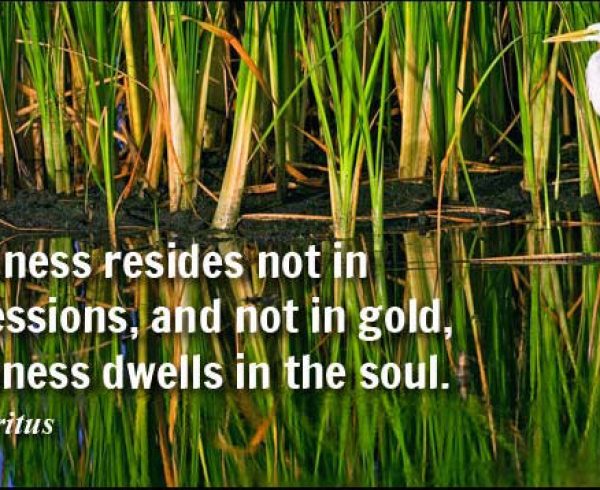
Chronic insomnia is defined as “difficulty initiating or maintaining sleep, awakening too early in the morning, or nonrestorative sleep”, and is the most common sleep disorder among adults. An estimated 50-70 million US adults have sleep or wakefulness disorder according to the CDC. It’s a true public health epedimic whose etiology has been confusing…
But what if I told you it’s the body’s way of needing a “reset” because your internal clock is off?
Often times, we think of a reset as a juice cleanse or full body detox and workout program. But there’s more to it than just that.
Of the handful of studies that have been performed, it’s noted that exercise significantly improves the sleep of people with chronic insomnia. In one particular study by Dr. G.S. Passos of Department of Biopsychology at the Universidade Federal de São Paulo, Brazil, the effects of a single exercise session found that a bout of moderate-intensity aerobic exercise like walking reduced the time it took to fall asleep and increased the length of sleep of people with chronic insomnia compared to a night in which they did not exercise. This is due to exercise triggering an increase in body temperature, and the post-exercise drop in temperature promotes falling asleep as well as reduces insomnia by decreasing arousal, anxiety and depressive symptoms by its effects on circadian rhythms, (our body’s clock).
It’s this ancient body clock that can regulate almost…everything.
 Studies published in the journal Nature from the Universities of Cambridge and Edinburgh gave insight into the circadian clock which controls patterns of daily and seasonal activity, from sleep cycles to butterfly migrations to a single flower opening.
Studies published in the journal Nature from the Universities of Cambridge and Edinburgh gave insight into the circadian clock which controls patterns of daily and seasonal activity, from sleep cycles to butterfly migrations to a single flower opening.
One of these noted studies, from the University of Cambridge’s Institute of Metabolic Science, had for the first time identified 24-hour rhythms in red blood cells. This was a huge discovery, because circadian rhythms have always been assumed to be linked to DNA and gene activity, but unlike most of the other cells in the body, red blood cells do not have DNA.
Akhilesh Reddy, from the University of Cambridge and lead author of the study, said: “We know that clocks exist in all our cells; they’re hard-wired into the cell. Imagine what we’d be like without a clock to guide us through our days. The cell would be in the same position if it didn’t have a clock to coordinate its daily activities. The implications of this for health are manifold. We already know that disrupted clocks — for example, caused by shift-work and jet-lag — are associated with metabolic disorders such as diabetes, mental health problems and even cancer. By furthering our knowledge of how the 24-hour clock in cells works, we hope that the links to these disorders — and others — will be made clearer. This will, in the longer term, lead to new therapies that we couldn’t even have thought about a couple of years ago.”
For the study, the scientists incubated purified red blood cells from healthy volunteers in the dark and at body temperature and sampled them at regular intervals for several days. They then examined the levels of biochemical markers, proteins called peroxiredoxins, that are produced in high levels in blood and found that they underwent a 24-hour cycle, (peroxiredoxins are found in virtually all known organisms).
A further study, by scientists working together at the Universities of Edinburgh and Cambridge, and the Observatoire Oceanologique in Banyuls, France, found a similar 24-hour cycle in marine algae, indicating that internal body clocks have always been important, even for those ancient forms of life.
[cm_ad_changer campaign_id=”1″ debug=”0″]
Andrew Millar of the University of Edinburgh’s School of Biological Sciences, who led that study, said: “This groundbreaking research shows that body clocks are ancient mechanisms that have stayed with us through a billion years of evolution. They must be far more important and sophisticated than we previously realized.”
So how does this “clock” work inside of us?
Circadian rhythms are ancient. The pattern was established about 3 billion years ago, and life on earth evolved in accordance with it. Dawn triggers basic biological changes in the waking human body. As the sun rises, so does heart rate, blood
pressure and body temperature. The liver, the kidneys and many natural processes also begin shifting from idle into high gear. Then as daylight wanes and darkness descends, these processes likewise begin to subside, returning to their lowest levels again as we sleep.
These internal biological patterns are tightly linked to an external cosmic pattern: the earth’s rotation around the sun once every 24 hours. This endless loop of light and darkness and the corresponding synchrony of internal and external clocks, are called circadian rhythms, from “circa diem,” which is Latin for “approximately a day.” Circadian rhythms influence almost all living organisms, from bacteria to algae, insects, birds and, as is increasingly understood by science now, us, humans beings.
Scientists partially understand how the synchronicity of internal and external clocks governs such things as migrating birds, hibernating bears and the navigational sun-bearings communicated by honey bees to their hivemates as well as the links between circadian rhythms and human health. These rhythms, or disturbances of them, help explain such physiological phenomena as jet lag and as noted, chronic insomnia in adults.
And here’s where it get’s interesting… it’s more than just insomnia that this clock can regulate. It’s disrupted pattern is linked to CANCER.
Really, it is only in recent years that researchers have turned their attention to the long-term health effects of disrupted circadian rhythms. About 25 years ago, a cancer epidemiologist at the University of Connecticut Health Center named Richard G. Stevens wondered why breast cancer rates were so high, and highest of all in industrial societies. He suggested a possible link between breast cancer and a modern invention that constantly disturbed circadian rhythms via electric lights. Following this logic, he also postulated that female night shift workers would have higher rates of cancer than female workers on the day shift.
The first paper appeared in Cancer Epidemiology, Biomarkers & Prevention in 2005. Using cases drawn mostly from Yale-New Haven Hospital, the researchers identified a structural genetic mutation in the Period3 gene that was significantly associated with breast cancer. They further examined all 10 human circadian genes, particularly the core circadian gene called CLOCK, which the authors describe as “the heart of the molecular autoregulatory feedback loop,” responsible for “maintaining the circadian cycle.” These findings provided the first genetic evidence linking breast cancer with circadian genes. Yong Zhu, associate professor in the Department of Environmental Health Sciences at The Yale School of Public Health and his colleagues also found evidence linking mutations in circadian genes to prostate cancer and non-Hodgkin’s lymphoma.
Further, they discovered that CLOCK regulates many other genes, including some associated with hormone production. In other words, circadian rhythms are deeply and systemically influential at the molecular level. Researchers call regulatory genes like CLOCK “transcriptional activators,” which are also known as oncogenes or tumor suppressors — genes that can affect cancer development. The study’s clear implication is that when something knocks CLOCK out of sync with the universal circadian rhythm, the health consequences can actually be grave.
By 2007, the link between breast cancer and night shift work was so well-accepted that a panel of experts assembled that year by the International Agency for Research on Cancer concluded that “shift work involving circadian disruption is probably carcinogenic to humans.”
“So we asked the question,” says Zhu, “what exactly happens at the molecular level?” Using data from a landmark Danish study of female shift workers, Zhu and colleagues discovered the missing molecular link: in women who worked at night for at least 10 years and had breast cancer, the disruption of their circadian rhythms was detectable at the level of DNA, in epigenetic changes — that is, genetic changes caused by external influences. This breakthrough paper was published in late 2011 in Chronobiology International.
In another study published in the Journal of Circadian Rhythms, it was stated, “These rhythms are the outward manifestation of an internal timing system generated by a circadian clock that is synchronized by the day-night cycle.”
So how can you reset your inner clock today? Ancient Ayurveda has some tips:
1. Adjust your bedtime: If you sleep late, you can scale back every night until you are at your desired time. According to Ayurveda, sleep by 10 pm is best, since between 10 pm to 2 am, the fire element, pitta, is strong, bringing on creative spurts of energy that make it hard to sleep. Plus, before 10 pm is when your body can fall into deep regenerative sleep, so if you consistently miss that deep sleep mark and hit the pillow at midnight, imbalances in the body can occur.
2. Don’t sleep in: Getting up at the same time everyday helps set your body’s clock. It’s best to wake up at 6 am in Ayurvedic thought since that is the time you can still remain fresh from the water element, kapha, that is present, rather than waiting and letting the sluggish-ness settle in.
3. Avoid eating or performing vigorous exercise too close to bedtime: Ayurveda states dinner should be eaten early, (between 6-7pm). Eating too late in the evening leads to undigested foods in the system and thus accumulated toxins.
4. Ditch the night light: According to research from Rush University Medical Centre in Chicago, exposure to evening light shifts your body clock to a later schedule. When possible, avoid bright and outdoor light close to bedtime and keep your surroundings dim at night.
5. Set the mood: Ayurveda says that relaxation is essential before bed to ensure proper rest, and if you do take a relaxing bath, do not wet your head. You can also try listening to relaxing music or light lavender scented oil in your bedroom. Make sure your bed is comfortable, the room is dark, and the temperature is not too warm to get some good zzz’s.
References:
http://www.cdc.gov/features/dssleep/
http://www.sciencedaily.com/releases/2011/01/110126131540.htm
http://news.yale.edu/2013/06/17/rhythm-everything
http://www.jcircadianrhythms.com/article/view/1740-3391-8-3/83
http://www.ncbi.nlm.nih.gov/pubmed/22019457







This web site really has all of the information and facts I wanted about this subject
and didn’t know who to ask.
For the best reviuew pleaqse view thijs amazing site; viril booster
– totallyhealthpoints.com,
This is quite interesting to me. I don’t work a fxed night shift, but I’m a writer (thus have no schedule), drink way too much coffee & don’t exercise regularly like I used to. It’s literally difficult to think clearly, not counting other stress factors. Looks like I need to take some notes.
-Sleepless in a city that does start with S! XD
I really appreciate the insights of the clock body thing… i look forward to apply more, concouisly what I was getting intuitively.
Thank you, look forward to more infos to improve the way I do thing, so that I can improve my life in general.
Write more, thats all I have to say. Literally, it seems
as though you relied on the video to make your point.
You definitely know what youre talking about, why waste your intelligence on just posting videos to your site when you could be giving us something enlightening to read?
Feel free to visit my web site … best muscle building workouts